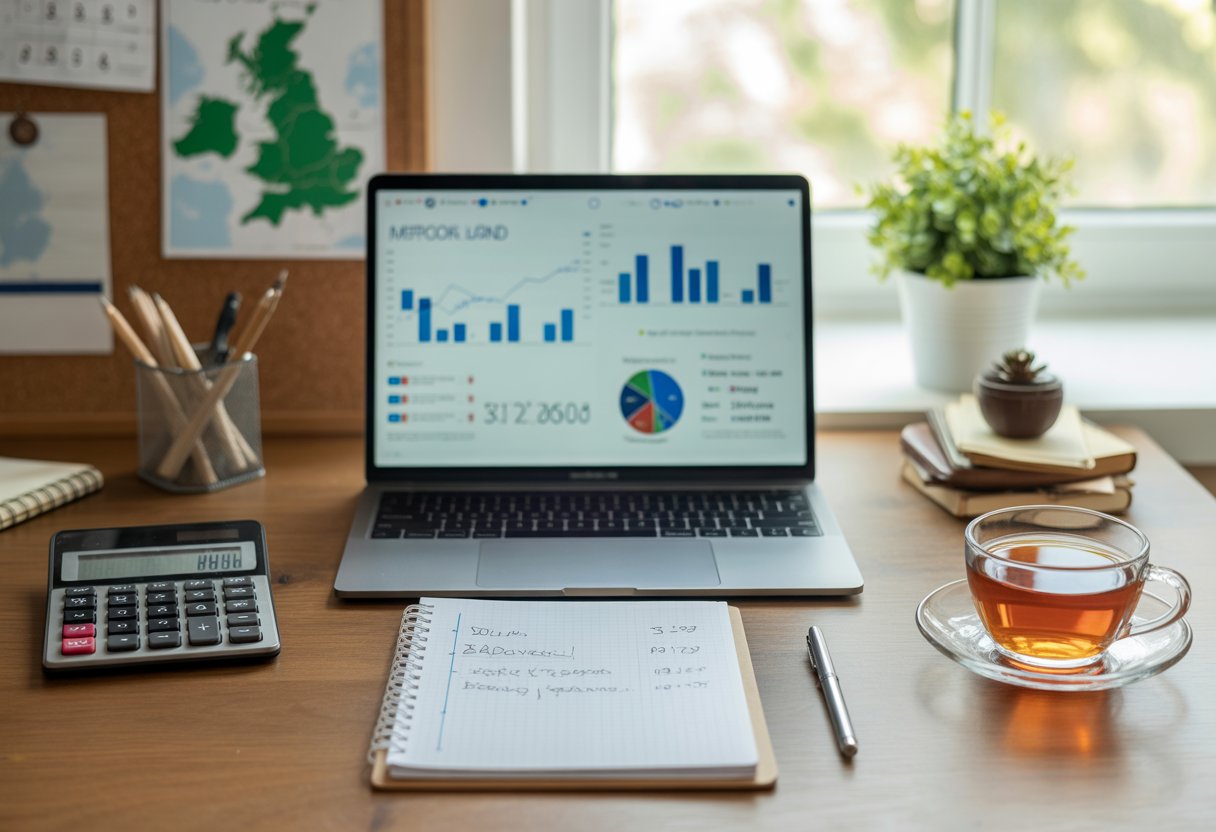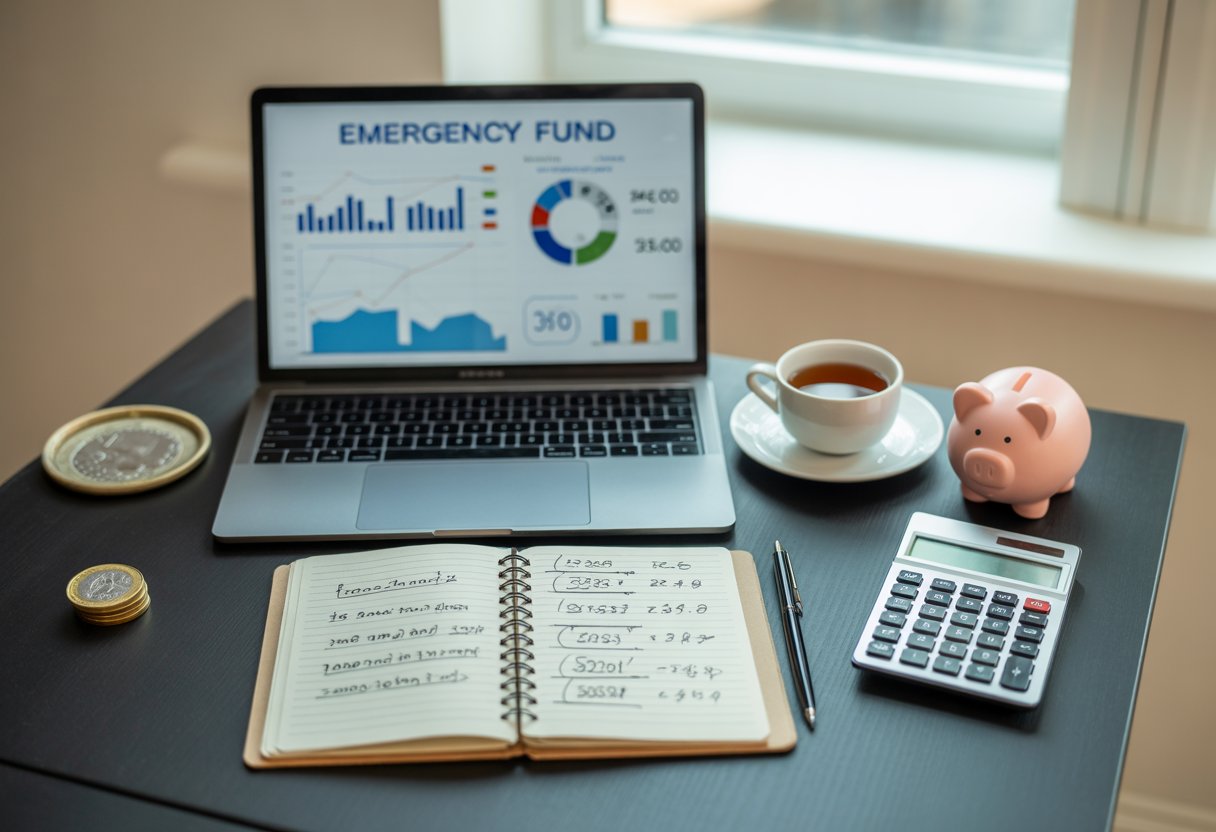Many people wonder how much money they should keep in an emergency fund to feel secure. The right amount can vary depending on personal circumstances, but experts often suggest a clear range for most people in the UK.

A practical emergency fund usually contains three to six months’ worth of essential living expenses. This amount helps cover costs like rent, bills, food, and travel if an unexpected event happens, such as job loss or urgent repairs.
Understanding the exact figure depends on individual income and spending habits, but having this safety net is key to financial stability. This article will explore how to work out the right number and why it matters.
Understanding the Purpose of an Emergency Fund

An emergency fund helps manage unexpected costs without causing financial stress. It shields people from having to borrow money or miss important bills. Understanding why it is essential, the types of emergencies it covers, and how it offers security is key to building the right fund.
Why You Need an Emergency Fund
An emergency fund acts as a financial backup for sudden expenses. It prevents relying on credit cards or loans, which often have high interest rates. This fund gives peace of mind by covering unexpected costs without disrupting daily spending.
Having savings set aside also helps avoid falling behind on bills like rent, utilities, or mortgage payments. Without an emergency fund, small setbacks like a car repair or medical bill can quickly become bigger financial problems.
Common Financial Emergencies in the UK
In the UK, common emergencies include job loss, car repairs, and urgent home maintenance. Medical emergencies that are not covered by the NHS, or delays in benefits payments, can also create financial strain.
Other situations might be unexpected travel for family emergencies or essential appliance replacements. These events can happen without warning and usually require immediate funds.
How an Emergency Fund Provides Stability
An emergency fund offers financial stability by providing easy access to cash when needed. This reduces stress and helps maintain a normal lifestyle despite difficulties.
It also prevents falling into debt by covering urgent costs directly. A well-planned fund means fewer disruptions to monthly budgets and important payments. This leads to stronger overall financial health.
How Much Should You Have in an Emergency Fund in the UK?

Emergency funds vary based on income, lifestyle, and responsibilities. Knowing how much to save depends on your monthly expenses and individual situation. This section breaks down typical savings amounts, factors that affect these numbers, ways to calculate your target, and how needs differ between individuals and households.
Recommended Savings Amounts
Most experts suggest saving between three to six months’ worth of essential expenses. For some, three months may be enough, especially if they have a stable job and support network. For others, six months or more is safer, particularly if income is irregular.
A simple way to think about it is:
| Savings Amount | Description |
|---|---|
| 3 months’ expenses | Basic safety net for most adults |
| 6 months’ expenses | Extra cushion for job uncertainty |
| 9-12 months’ expenses | Recommended if self-employed |
The key is to have enough to cover rent or mortgage, bills, food, and other essentials without income.
Factors Influencing Your Emergency Fund Size
Several things affect how large an emergency fund should be. These include job security, income level, family size, and any debts. If a person’s job is unstable or seasonal, a bigger fund is needed.
Health conditions and the cost of private medical care can increase the required amount. Also, owning a home with a mortgage usually means needing a larger fund compared to renting, to cover repayments in emergencies.
Other factors include:
- Number of dependents
- Access to other financial resources
- Cost of living in different UK regions
These factors help decide whether three months or six (or more) is appropriate.
Calculating Personal Emergency Fund Targets
To calculate a personal target:
- Add up essential monthly expenses (housing, utilities, food, travel).
- Multiply by the number of months needed (usually 3-6).
- Adjust the figure based on personal circumstances like debts or income variability.
Example:
- Monthly essentials = £1,200
- Target = 6 months
- Emergency fund = £1,200 × 6 = £7,200
People should keep this money in an easy-access account, separate from day-to-day funds.
Differences Between Individuals and Households
Single people usually need less saved than households with multiple people. Households must cover more costs like childcare or extra food.
The number of earners affects the amount too. Households with more earners might safely keep less in an emergency fund, as more income streams reduce risk.
To compare:
| Situation | Recommended Fund Size |
|---|---|
| Single person | 3 to 6 months’ essentials |
| Household with 1 earner | 6 months or more |
| Household with multiples earners | 3 to 6 months combined |
Each person or household should base their fund size on actual costs and risks.
Ways to Build Your Emergency Fund

Building an emergency fund takes planning and good habits. It helps to set a clear target, save regularly without thinking too much, and adjust your approach if your income isn’t steady. These ideas make saving manageable and more effective.
Setting Realistic Savings Goals
Setting a clear and realistic savings goal is key to building an emergency fund. Aim for an amount that covers at least three to six months of essential expenses, like rent, bills, and food.
Break this total into smaller, fixed targets. For example, if you want to save £3,000 in a year, aim to save £250 each month. Tracking progress monthly helps keep motivation high and adjusts goals if needed.
It’s important the goal fits your financial situation. If £250 a month is too much, lower the target and extend the timeframe. Saving something regularly is better than nothing.
Automating Savings
Automating savings makes building an emergency fund easier. Setting up a direct debit from a current account to a savings account ensures money moves automatically each month without manual effort.
This method removes the temptation to spend the money and builds savings steadily. It’s best to automate a small amount at first, which can increase over time as finances allow.
Using separate accounts for emergency funds helps avoid mixing those savings with daily spending money. Look for savings accounts with no withdrawal limits to keep funds accessible during an emergency.
Adapting Strategies for Variable Incomes
People with variable incomes, like freelancers, need flexible saving strategies. Instead of fixed amounts, they can save a percentage of each payment, for example, 10% of every job or invoice.
During high earning months, saving more helps balance periods with less income. Tracking monthly earnings closely is necessary to adjust savings properly.
Creating a buffer in times of plenty reduces financial stress when income falls. Freelancers can also keep a smaller fund and plan to build it slower, matching their income flow.
Where to Keep Your Emergency Fund

Choosing the right place to keep an emergency fund means finding a balance between safety, easy access, and decent returns. It’s important to pick an account that provides quick access without risking the money or losing value.
Best Account Types for Emergency Savings
The most common accounts for emergency savings are instant access savings accounts, easy access ISA accounts, and high street current accounts with an emergency buffer. Instant access savings accounts pay interest and allow withdrawals without penalty.
Easy access ISAs may offer better interest rates but sometimes limit withdrawals or require notice.
High street current accounts usually offer little or no interest but provide immediate access, which is useful when money is needed fast.
Access and Liquidity Considerations
An emergency fund should be highly liquid, meaning money can be withdrawn quickly. Instant access accounts usually clear funds on the same day or the next business day, which is ideal for emergencies.
Some accounts require notice periods before withdrawals, which could delay access. This is not suitable for urgent needs.
Avoid accounts with withdrawal limits that might restrict how much money can be taken out at once.
Balancing Safety and Returns
Safety means keeping money in accounts protected by the Financial Services Compensation Scheme (FSCS), which covers up to £85,000 per person per bank. This protects savings if the bank fails.
Returns on emergency funds are low because the money must be safe and accessible. Interest rates on easy access savings accounts tend to be lower than fixed-term savings.
It’s better to prioritise security and access over high returns in an emergency fund, as quick availability is critical.
Reviewing and Adjusting Your Emergency Fund Over Time
An emergency fund is not a one-time setup. It needs regular checking and changes to match different needs and life situations. This helps keep financial security steady.
When to Increase Your Emergency Fund
People should consider raising their emergency fund when their monthly expenses go up. This can happen if rent, bills, or loan payments increase. A good rule is to cover 3 to 6 months of living costs, so any rise in these costs means the fund should grow too.
If a person’s job becomes less stable or if they become self-employed, increasing the emergency fund is important. This helps cover longer periods without income. Inflation also affects the fund’s value, so saving more keeps up with higher prices.
Responding to Life Events and Changing Circumstances
Life changes often affect how much money is needed in an emergency fund. Events like having a baby or buying a home usually mean higher expenses and more financial responsibility. These require adding more to the fund.
If a person pays off debts or moves to a less expensive area, it might be okay to reduce the emergency fund slightly. However, big changes like illness or caring for family members usually mean increasing the fund again. Regular reviews ensure the fund fits current needs well.

